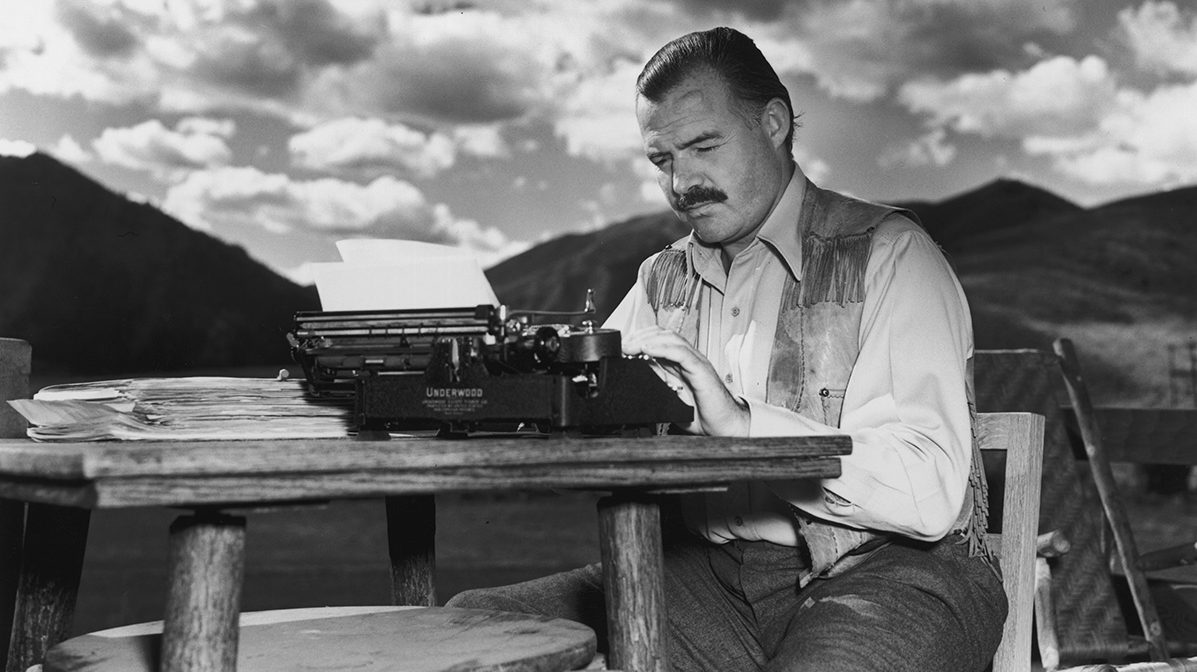Constantinople was in chaos when the famous military rogue Col. Charles Sweeny ran into a young, unknown journalist named Ernest Hemingway.
It was 1922 and Hemingway was there to cover the Greco-Turkish War for the Toronto Star. Sweeny, already a veteran of revolutions, skirmishes and full-on battles on three continents, was looking for his next fight.
Though they were separated by two decades in age, there was almost instant affinity between the fighter and the aspiring novelist.
“Hemingway saw in Sweeny the kind of man he wished to be, a tough, battle-scarred man of action, a war hero and a romantic soldier of fortune following whichever side captured his imagination and sympathy, an extrovert who enjoyed life and who could hold his own with women,” writes Sweeny biographer Donald McCormick.
Sweeny, in turn, took the 23-year-old Hemingway under his wing. The fateful meeting in Turkey was the beginning of a decades-long friendship between the two uncommon men, and one that would inspire parts of Hemingway’s novels.
Hemingway was just a boy when Sweeny, the son of a wealthy mining magnate, had his first real experience with fighting for a cause. After having been kicked out of West Point twice, Sweeny was in Mexico in 1906 when he became involved in a popular revolt against Mexican President Jose de la Cruz Porfirio Diaz Mori, known as Diaz, who Sweeny saw as a corrupt and ruthless dictator, according to another biography of Sweeny by Charley Roberts and Charles P. Hess.
Convinced of the righteousness of a percolating rebellion, Sweeny allied himself with insurgent leaders and personally helped to lead a “guerrilla force” from Texas to Coahuila, just south of the border. The guerrillas found initial success, but was eventually out-matched by the Mexican military. Sweeny was wounded in that skirmish and another before leaving the war after becoming disillusioned with other rebel leaders, Roberts and Hess write. The two authors also offer a possible more romantic explanation for his leaving — that he had followed a beautiful, young guerrilla leader known as Capitano Juanita to South America.
Whatever the reason, it appeared that in Mexico Sweeny had found his life’s vocation, which was to go into battle for causes in which he believed.
In Venezuela, he helped the fight against dictator Cipriano Castro. In Nicaragua, he similarly set his sights on Jose Santos Zelaya. These conflicts were complex both internally and geopolitically, and in each case, either the U.S. government or powerful U.S. corporations had financial interests in their outcome, but Roberts and Hess paint Sweeny as a man who spent much of his own money to side with the cause that in his mind was “just.”
But the battles of North, Central and South America were only preambles to the conflict that would engulf the globe and make Sweeny famous: the First World War.
By 1914, when the assassination of Archduke Franz Ferdinand provided the spark for the powder keg that was Europe, Sweeny had lived in Paris for a few years and was enamored with the French. He had predicted a massive conflict was inevitable and when it broke out, he immediately abandoned a family vacation on the French coast to get back to Paris. There, he and other like-minded Americans set out to recruit their fellow countrymen to join the fight on the side of the French — narrowly bypassing American neutrality laws by enlisting in the French Foreign Legion, rather than directly with the French military proper.
Though thousands of Americans expressed interest in helping the French, the first group to join was 43 strong, “an odd assortment of men indeed, thrown together by desperate times and a common objective — to get into the war as soon as possible — if not a common motive,” Roberts and Hess write. “Some were idealists… some rich adventurers… and some were experienced soldiers… Sweeny was all three.”
Sweeny served with the Legion on the front lines, fighting both the Germans and miserable trench warfare conditions. His fame back home grew as he sent back dispatches from the front for various newspapers. At one point he was shot in the chest during an advance, and the wound appeared so grave that a physician who examined him suggested a priest be summoned instead. According to McCormick’s biography, Sweeny disagreed, saying, “No dying for me.” (In a newspaper dispatch, Sweeny described being shot “through [his] lung and liver” as “rather unfortunate.”)
Sure enough, Sweeny survived and eventually recovered enough to go on fighting. For his efforts in the Great War, Sweeny was given the Legion of Honor, one of the highest honors awarded by the French government.
The First World War ended in November 1918, but Sweeny soon found other battlefields. A 1940 profile in The New Yorker titled “Soldier of Fortune” puts it succinctly: “Between major wars he has kept fit by fighting in the Bolsheviks on behalf of the Poles, the Riffs [sic] in Morocco on behalf of the French, the Fascists in Spain on behalf of the Loyalists and by doing setting-up exercises [knee bends, push-ups, etc.] every morning.”
Readers of this column may recognize the reference to the Rif War in Morocco. It was Sweeny who led a group of American volunteer pilots to help the French in their efforts to put down a popular rebellion, including through the bombing of civilians in a mountainous holy city in 1925. Roberts and Hess note that the decision to fight against the indigenous revolutionaries appeared out of character for Sweeny, considering his history in Latin America.
In this instance, Sweeny reasoned that his beloved France was “fighting the cause of the white man’s civilization, and all who have formed this squadron know enough of the world to appreciate what the white man’s civilization means.” (Sweeny’s grandson was later quoted as saying he believed that his grandfather was “probably a white supremacist; not Ku Klux Klan but one who believes that Europeans are superior to other races.”)
Since their meeting in Turkey, Sweeny and Hemingway kept up through correspondence, and Sweeny invited Hemingway to go with him on his Moroccan expedition. Hemingway reportedly declined, explaining that he was deep into work on his first novel, The Sun Also Rises.
The two met up again during the Spanish Civil War, the conflict that later provided Hemingway with the inspiration for For Whom the Bell Tolls.
Historian Nicholas Reynolds, author of the book Writer. Sailor. Soldier. Spy. about Hemingway’s own flirtations with espionage, writes that in Spain Hemingway “always had time for Sweeny, especially when there was a war on and he was promoting some sort of wild scheme with his trademark passion. Sweeny attracted friends who, like himself, did not fit any particular mold…”
In one instance, Hemingway wrote to a contemporary that Sweeny showed the Republican fighters, who he was advising, “everything that was wrong with the Russian staff work” about a planned offensive. Hemingway said afterward “every goddamned thing came out exactly as he said it would including how we lost the town and why because of not doing one thing, which should have been done when it was taken.”
In another letter, Hemingway recounted Sweeny advising on the destruction of a strategically important bridge, which readers may recognize as the central plot point in For Whom the Bell Tolls.
Of Sweeny, Hemingway wrote at the time, “… I would rather listen to him on military things than anybody I have ever known.”
When the Second World War began in 1939, Sweeny again organized the recruitment of Americans who wanted to join the fight years before the U.S. government would. The controversial head of the FBI, J. Edgar Hoover, set out to stop what he thought was illegal recruitment, but Sweeny still managed to assemble another group of young American flyers who would become the famed Eagle Squadrons, flying with the British Royal Air Force.
In 1959 an aging Sweeny visited Hemingway in his home in Ketchum, Idaho. Shortly after returning to his own home in Salt Lake City, Sweeny called Hemingway to tell him he’d suffered a stroke. Hemingway’s then-wife Mary wrote to Sweeny, offering prayers. Hemingway added a short post-script that said simply, “Best love and luck, Charlie, Much, EH.”
Roberts and Hess write, “The love continued but the luck they each had enjoyed through numerous adventures finally ran out for Hemingway on July 2, 1961, when he committed suicide with his favorite shotgun in the foyer of his home in Ketchum.”
Sweeny was one of 17 honorary pallbearers for Hemingway’s funeral.
After a lifetime of fighting, Sweeny died peacefully two years later at age 81. While ailing in a hospital, he purportedly told a friend, “Whoever thought I should outlive Ernest Hemingway.”
This article appeared in an InsideHook newsletter. Sign up for free to get more on travel, wellness, style, drinking, and culture.

























